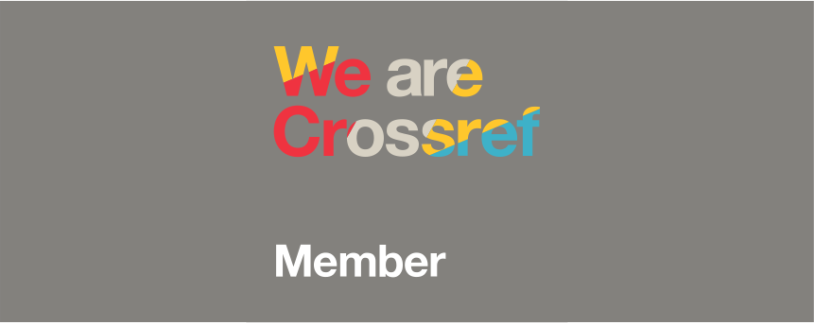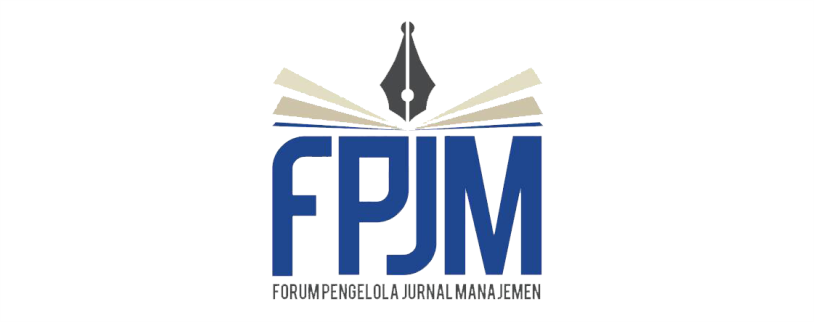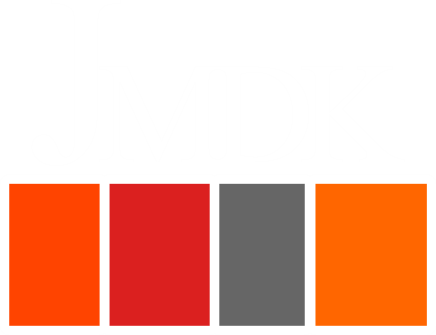Human Versus Corporate Tone of Voice: Which one Performs Better in The Telecommunication Industry?
DOI:
https://doi.org/10.26905/jmdk.v12i1.11416Keywords:
Multi-Group Analysis, Satisfaction, Social Presence, Tone of Voice, TrustAbstract
This research delves into the nuanced impact of human and corporate tones of voice on perceived social presence, trust, and customer satisfaction, contrasting the communication strategies between the human tone of the voice-centric brand (HCB) and corporate tone of the voice-centric brand (CCB), two notable brands in the Indonesian market. Using the PLS-MGA technique, the study offers detailed insights into the real-world implications of these tones through two distinct case studies. Findings reveal a marked difference between HCB and CCB concerning the influence of tone on perceived social presence. HCB's human tone resonates more with customers, creating a pronounced positive impact, while CCB's corporate tone also has a positive but lesser influence. In shaping customer trust, the human tone in HCB stands out. However, when it comes to satisfaction, only HCB's human tone remains influential, with CCB's corporate tone not manifesting a significant effect. The study further underscores the nuanced role of perceived social presence as a mediator in the relationship between tone of voice, trust, and satisfaction. An essential takeaway is that while the human tone is often lauded for its benefits, it is only sometimes suitable. Industries prioritizing professionalism and expertise might need a balanced approach between human and corporate tones. The findings, especially contextualized within the two Indonesian network providers, emphasize the necessity of recognizing and catering to diverse customer expectations.
Downloads
References
Akcora, C. (2020). The effect of chatbots tone of voice on trust and customer satisfaction. University of Twente.
Barcelos, R. H., Dantas, D. C., & Sénécal, S. (2018). Watch Your Tone: How a Brand’s Tone of Voice on Social Media Influences Consumer Responses. Journal of Interactive Marketing, 41. https://doi.org/10.1016/j.intmar.2017.10.001
Beal, J. (2021). Beauty and the Beast: The Value of Teaching Fairy Tales to University Students in the 21st Century. International Journal of English and Cultural Studies, 5(1). https://doi.org/10.11114/ijecs.v5i1.5207
Benny, B., Maharani, P. D., & Nugraha Putra, I. G. B. W. (2022). The Analysis of Abstraction Personification in Skillet’s Selected Song. Jurnal Impresi Indonesia, 1(3). https://doi.org/10.36418/jii.v1i3.25
Briki, W. (2022). Relationships between basic psychological needs and violent extremist Attitudes: The mediating role of actively open-minded thinking. Cogent Psychology, 9(1). https://doi.org/10.1080/23311908.2022.2047300
Chen, F., Togneri, R., Maybery, M., & Tan, D. (2021). Voice Gender Scoring and Independent Acoustic Characterization of Perceived Masculinity and Femininity. ArXiv Preprint ArXiv:2102.07982.
Chen, K.-J., Lin, J.-S., Choi, J. H., & Hahm, J. M. (2015). Would You Be My Friend? An Examination of Global Marketers’ Brand Personification Strategies in Social Media. Journal of Interactive Advertising, 15(2). https://doi.org/10.1080/15252019.2015.1079508
Fata, I. A., & Aprilya, A. (2021). Examining personification in songs as one of the English teaching materials. Englisia: Journal of Language, Education, and Humanities, 8(2). https://doi.org/10.22373/ej.v8i2.7186
Hair, J. F., Hult, G. T., Ringle, C., & Sarstedt, M. (2017). A Primer on Partial Least Squares Structural Equation Modeling (PLS-SEM). In Sage.
Hair, J. F., Sarstedt, M., Ringle, C. M., & Gudergan, S. P. (2018). An Overview of Recent and Emerging Developments in PLS-SEM. Advanced Issues in Partial Least Squares SEM, June.
Hayes, A. T., Hughes, C. E., & Bailenson, J. (2022). Identifying and Coding Behavioral Indicators of Social Presence With a Social Presence Behavioral Coding System. Frontiers in Virtual Reality, 3. https://doi.org/10.3389/frvir.2022.773448
Hayes, J. L., Britt, B. C., Applequist, J., Ramirez, A., & Hill, J. (2020). Leveraging Textual Paralanguage and Consumer–Brand Relationships for More Relatable Online Brand Communication: A Social Presence Approach. Journal of Interactive Advertising, 20(1), 17–30. https://doi.org/10.1080/15252019.2019.1691093
Henseler, J. (2015). PLS-MGA : A Non-Parametric Approach to Partial Least Squares-based Multi-Group. Challenges at the Interface of Data Analysis, Computer Science, and Optimization, 495–501.
Henseler, J., & Fassott, G. (2010). Testing Moderating Effects in PLS Path Models: An Illustration of Available Procedures. In Handbook of Partial Least Squares. https://doi.org/10.1007/978-3-540-32827-8_31
Henseler, J., Ringle, C. M., & Sarstedt, M. (2015). A new criterion for assessing discriminant validity in variance-based structural equation modeling. Journal of the Academy of Marketing Science, 43(1). https://doi.org/10.1007/s11747-014-0403-8
Holthaus, P. (2021). How does a robot’s social credibility relate to its perceived trustworthiness? ArXiv Preprint ArXiv:2107.08805.
Hughson, E., Tuttosi, P., Matsufuji, A., & Lim, A. (2022). Read the Room: Adapting a Robot’s Voice to Ambient and Social Contexts. ArXiv Preprint ArXiv:2205.04952.
Jeong, H. J., Chung, D. S., & Kim, J. (2022). Brands Are Human on Social Media: The Effectiveness of Human Tone-of-Voice on Consumer Engagement and Purchase Intentions Through Social Presence. International Journal of Communication; Vol 16 (2022). https://ijoc.org/index.php/ijoc/article/view/19269
Kupina, L., Kobyzhcha, N., Behal, T., Nikolaiko, H., & Dniprenko, V. (2022). Theoretical foundations of personification for university educational activities during pandemic. International Journal of Health Sciences, 6(1). https://doi.org/10.53730/ijhs.v6n1.3236
Labrecque, L. I. (2014). Fostering consumer-brand relationships in social media environments: The role of parasocial interaction. Journal of Interactive Marketing, 28(2). https://doi.org/10.1016/j.intmar.2013.12.003
Lameris, H., Mehta, S., Henter, G. E., Gustafson, J., & Székely, É. (2023). Prosody-controllable spontaneous TTS with neural HMMs. ICASSP 2023-2023 IEEE International Conference on Acoustics, Speech and Signal Processing (ICASSP), 1–5.
Men, L. R., & Tsai, W. H. S. (2015). Infusing social media with humanity: Corporate character, public engagement, and relational outcomes. Public Relations Review, 41(3). https://doi.org/10.1016/j.pubrev.2015.02.005
Moran, K. (2023). The Four Dimensions of Tone of Voice. Nielsen Norman Group.
Ng, M., Coopamootoo, K. P. L., Toreini, E., Aitken, M., Elliot, K., & van Moorsel, A. (2020). Simulating the effects of social presence on trust, privacy concerns & usage intentions in automated bots for finance. 2020 IEEE European Symposium on Security and Privacy Workshops (EuroS&PW), 190–199.
Noyman-Veksler, G., Greenberg, D., Grotto, I., & Shahar, G. (2021). Parents’ malevolent personification of mass vaccination solidifies vaccine hesitancy. Journal of Health Psychology, 26(12). https://doi.org/10.1177/1359105320903475
Putra, W. B. T. S. (2022). Problems, Common Beliefs and Procedures on the Use of Partial Least Squares Structural Equation Modeling in Business Research. South Asian Journal of Social Studies and Economics, 14(1), 1–20. https://doi.org/10.9734/sajsse/2022/v14i130367
Putra, W. B. T. S., & Ardianto, B. (2022). Why Does Risk Communication Matter? Preventive and Excessive Health Behavior among Uninfected People. South Asian Journal of Social Studies and Economics, 13(2), 56–72. https://doi.org/10.9734/sajsse/2022/v13i230355
Rinaldi, F. R., & Putra, W. B. T. S. (2022). Why HR, corporate and marketing communication divisions should work together?: The mediating role of Indonesia Bank’s employer branding to attract job pursuit intention. International Journal of Research in Business and Social Science (2147- 4478), 11, 11–23. https://doi.org/10.20525/ijrbs.v11i8.2121
Ringle, C. M., Wende, S., & Becker, J.-M. (2022). SmartPLS 4. SmartPLS. https://www.smartpls.com/
Simon, G. (2022). Identification and Analysis of Personification in Hungarian: The PerSECorp project. 2022 Language Resources and Evaluation Conference, LREC 2022.
Stauss, B., & Seidel, W. (2019). Social Media Complaints. In Management for Professionals: Vol. Part F522. https://doi.org/10.1007/978-3-319-98705-7_17
Sung, K. H., & Kim, S. (2021). Do Organizational Personification and Personality Matter? The Effect of Interaction and Conversational Tone on Relationship Quality in Social Media. International Journal of Business Communication, 58(4). https://doi.org/10.1177/2329488418796631
Toader, D. C., Boca, G., Toader, R., Măcelaru, M., Toader, C., Ighian, D., & Rădulescu, A. T. (2020). The effect of social presence and chatbot errors on trust. Sustainability (Switzerland), 12(1). https://doi.org/10.3390/SU12010256
Tsur, N. (2022). Chronic Pain Personification Following Child Abuse: The Imprinted Experience of Child Abuse in Later Chronic Pain. Journal of Interpersonal Violence, 37(5–6). https://doi.org/10.1177/0886260520944529
Tsur, N., Defrin, R., Shahar, G., & Solomon, Z. (2020). Dysfunctional pain perception and modulation among torture survivors: The role of pain personification. Journal of Affective Disorders, 265. https://doi.org/10.1016/j.jad.2020.01.031
Zhang, S., Tang, G., Li, X., & Ren, A. (2023). The effects of appearance personification of service robots on customer decision-making in the product recommendation context. Industrial Management and Data Systems, 123(2). https://doi.org/10.1108/IMDS-11-2021-0662
Downloads
Published
Issue
Section
License
Authors who publish with this journal agree to the following terms:
(1)Â Copyright of the published articles will be transferred to the journal as the publisher of the manuscripts. Therefore, the author confirms that the copyright has been managed by the journal.
(2) Publisher of Jurnal Penelitian is University of Merdeka Malang.
(3) The copyright follows Creative Commons Attribution–ShareAlike License (CC BY SA): This license allows to Share — copy and redistribute the material in any medium or format, Adapt — remix, transform, and build upon the material, for any purpose, even commercially.












